Improving patient experience is on every clinician and health care organization’s priority list. It is critical to attract new patients, increase loyalty and trust, and foster greater patient engagement.
The more patients trust their clinician, the greater the likelihood they will adhere to medical advice, leading to better clinical outcomes. A positive patient-clinician relationship also develops patient loyalty within your health system.
Data analytics can provide a roadmap to implement necessary patient experience changes and improvements even in the face of challenging situations.
Value of Patient Experience Data Reports
Why do we need patient experience and satisfaction reports, and what purpose do they serve?
The information gleaned from these reports often turns subjective patient perceptions into meaningful, quantifiable, actionable data about the quality of care patients receive.
Related Resource: Improving Patient Experience Along the Continuum of Care
Health care leaders can use this information to highlight and produce greater success in clinical interactions. While the wide variety of data analytics vendors — Press Ganey, HealthStream, NRC, Qualtrix, and others — have different reports that present data in different ways, most focus on the same four areas:
- How are the nurses doing overall?
- How are the clinicians doing overall?
- How well do we communicate?
- How well are we caring for our patients?
The answers to these critical questions help to create performance improvement plans.
Use Reports to Influence Behavior as a Group
Another reason for such reports is to help hospital and emergency medicine leadership influence group behavioral change, resulting in improved patient outcomes.
“Part of the takeaway is to get comfortable with the concept of using reports designed purely to help change behavior,” said Dr. Noah Hoskins, SVP, Group Medical Officer, SCP Health, during a presentation on patient experience at SCP’s MLC21 medical leadership conference.
Dr. Hoskins contends that objective data helps make incremental changes, keeps priorities organized, and serves as a “point of need” in modeling ideas.
She advised leadership to use a “continuous improvement board” displayed conspicuously where team members can gather and view the information in a transparent, non-punitive way to communicate and network.
“What the data shows is that when individuals learn together in a positive atmosphere, they pick up tips and tricks, they pick up networking opportunities, but they also pick up modeling behaviors,” Dr. Hoskins said.
She also offered this advice:
“Take an opportunity not just to look at the numbers but get with your practice specialists on the hospitalist side or your EDRC on the EM side or your director and medical director and make sure that you have some sense of trends that you can look at.”
Dr. Hoskins suggested that it’s worth it to take the time to read individual comments, “Look at what comments your hospital is able to share with you to see what patients are saying … Look for patterns for improvement because our patients are taking the time to give us ideas of how we can make their experience better.”
By observing trends in the data, leaders can learn what their teams are doing well and where patterns for improvement exist.
Use Reports to Create an Individualized Action Plan
Patient satisfaction and experience reports serve another vitally important function. They help medical leadership Identify individuals who need assistance and then develop an action plan that offers it at a personalized level.
Dr. Ken Heinrich, SVP, Group Medical Officer, SCP Health, who shared the MLC21 patient experience presentation with Dr. Hoskins, said being there for our patients depends on us taking care of each other and ourselves.
“When we are sharing these reports and looking through patient satisfaction reports, we’re going to identify individuals who need help,” Dr. Heinrich said. “We’re going to identify people within our group who need some patient experience strategies. We’re going to identify people who need some personal assistance. Then we move from just reporting to action planning.”
Dr. Heinrich recommended that action planning be non-punitive, educational, peer-to-peer, and emotionally supportive for those needing help. He also warned that it would be wise for clinical leadership to communicate with the hospital.
“All too often within our groups, we identify people who are struggling, and we try to work privately with those individuals,” he said. “If we’re not communicating with our hospitals, if we’re not proactive, and keeping our hospitals informed, then, unfortunately, we set our groups up for failure.”
He added that keeping communication lines open promotes transparency and a sense of partnership that gives leadership the freedom and flexibility to identify and address existing issues.
SCP Health’s Approach to Gathering Patient Data
Clinician satisfaction and patient satisfaction are directly correlated. The more satisfied our staff, the more satisfied our patients. Therefore, it’s in your hospital or health system’s best interest to keep clinicians happier and more fulfilled. The key lies in collecting and understanding critical patient satisfaction and experience data.
SCP Health uses proprietary technology to gather data, both individually and facility-wide. We take that data and turn it into actions that benefit quality and performance.






